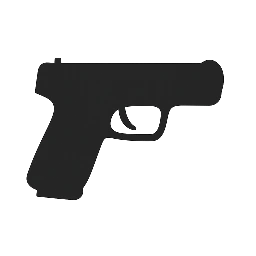Why Gun Cleaning Matters
Each time a firearm is fired, it leaves behind carbon, lead, and powder residue. This buildup can:
- Cause misfires or jams
- Reduce accuracy
- Accelerate wear on moving parts
- Create dangerous conditions if ignored
Regular cleaning also lets you inspect your firearm for damage or wear, helping you spot small issues before they become serious problems.
A clean gun is a reliable gun—treat it with care, and it will return the favor.


When Should You Clean Your Gun?
- After every trip to the range
- Monthly if stored for home defense
- Before and after long-term storage
- After exposure to moisture or harsh weather
What You’ll Need
Before cleaning, gather your supplies:
- Bore brush and cleaning rod or bore snake
- Patch holder and patches
- Nylon brush or old toothbrush
- Gun cleaning solvent
- Gun oil/lubricant
- Microfiber cloth or rags
- Cotton swabs or picks
- Safety glasses and gloves (optional but wise)
- Gun cleaning mat or tray
20 Detailed Steps for Cleaning Your Firearm
- Unload the Firearm
Triple-check that the gun is unloaded—remove the magazine and inspect the chamber. - Remove All Ammunition from the Area
Keep all live rounds far from your work area to avoid accidents. - Set Up a Safe Workspace
Use a well-lit, ventilated space with a flat surface and your tools nearby. - Put on Gloves and Safety Glasses
Solvents and debris can irritate skin and eyes—protection is smart. - Read Your Firearm Manual
Understand your specific model’s disassembly and lubrication points. - Field Strip the Firearm
Disassemble the firearm into its main parts (slide, barrel, frame, magazine, etc.). - Attach Bore Brush to Cleaning Rod
Dip the brush in solvent and insert it into the bore. - Scrub the Bore
Run the brush through the barrel several times to loosen debris. - Let Solvent Sit in the Bore
Let it soak for a few minutes while you clean other parts. - Clean the Slide or Bolt
Use a brush and solvent to scrub carbon from rails and tight areas. - Brush the Frame and Trigger Assembly
Gently clean internal corners and moving parts, avoiding force. - Use Cotton Swabs for Small Areas
Clean hard-to-reach spots with swabs or plastic picks. - Run Cleaning Patches Through the Barrel
Push patches through the bore until they come out clean. - Wipe All Parts with a Cloth
Remove any loose dirt, solvent, or moisture from the parts. - Apply Lubricant to Moving Parts
Use only a small amount on slides, pins, and contact points. - Oil the Exterior Surfaces
Lightly coat the metal to prevent rust, but avoid greasy buildup. - Reassemble the Firearm
Follow your manual and ensure every part is correctly in place. - Perform a Function Check
Rack the slide, dry fire (if safe), and test safeties or magazine release. - Final Wipe Down
Use a microfiber cloth to remove fingerprints and give a polished finish. - Store in a Safe, Dry Place
Place your clean gun in a secure storage space, ideally with a dehumidifier.
Conclusion
Cleaning your gun is not just about maintenance—it’s about responsibility. As a gun owner, you’re in charge of ensuring your weapon works reliably and safely. A well-maintained firearm protects you, your family, and your investment.
Make cleaning a habit after every use, and don’t rush the process. Over time, you’ll become familiar with your gun’s mechanics, gain confidence in its operation, and avoid costly issues down the line.
GunCleaningSteps #FirearmCare #GunOwnerGuide #CleanGunSafeGun #SecondAmendmentResponsibility #SafeHandlingTips #NewGunOwnerHelp #GunCleaningBasics #ResponsibleShooting #HomeDefenseTips


Leave a Reply